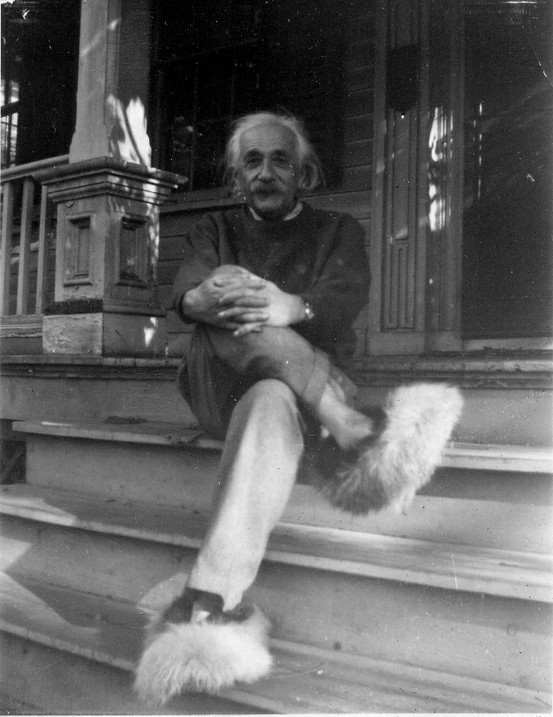
If you haven’t heard, ugliness is back in fashion. The sort of ill-fitting, cheaply made clothes that inspires your dad to hold up something his closet and wryly ask, “am I trendy now?” Tons of articles have already been written about the return of dad style, as well as the chunky, quasi-orthopedic shoes that accompany it. Part of this is about the return of irony; part of it is about the revival of a very specific ‘90s look. The other part is simply about how trends work, and like with any social group, how fashion insiders love to have a knowing wink as a way to identify each other.
The more interesting part is about how this is a reaction to notions of “good taste.” In a 2013 feature at The New York Times, Miuccia Prada put it succinctly:
The investigation of ugliness is, to me, more interesting than the bourgeois idea of beauty. And why? Because ugly is human. It touches the bad and the dirty side of people. You know, this might have been a scandal in fashion but in other fields of art it is common: in painting and in movies, it was so common to see ugliness. But, yes, it was not used in fashion and I was very much criticized for inventing the trashy and the ugly.
To be sure, the bourgeois ideal of beauty hasn’t been en vogue since the mid-20th century — back when clothiers still made traditional dresses and suits for the rich — but fashion has been unusually obsessed with democratic notions of “coolness” in the past few years. And unbeknownst to many menswear enthusiasts, much of this springs from womenswear. Back in 2011, Phoebe Philo sent fur-lined Birkenstocks down Celine’s runway, which made the style a big hit with women. And shortly after, guys started wearing Birks because of how easily they pair with workwear.
Some of the stuff that’s popular now is too left-field for us, but there are some classically-minded ugly shoes that we think are worth celebrating. Here are ten of my favorites, along with suggestions on how they can be worn today.
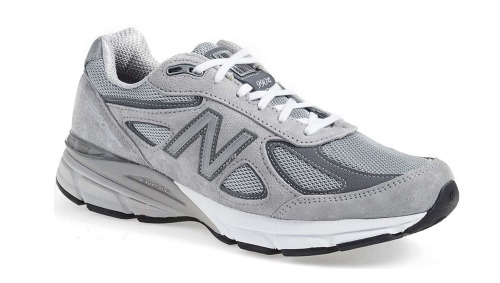
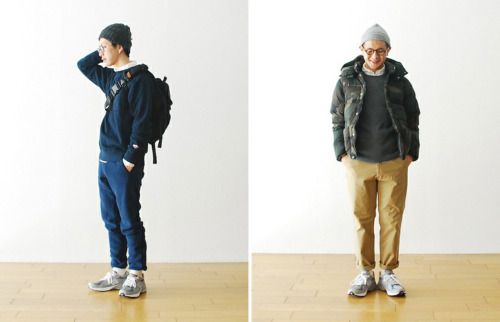
New Balance 990s
We love New Balance for their classic retro-styled runners, but their 990 is unabashedly ugly in the best of ways. The techy combination of mesh and suede, along with the needless, almost over-the-top detailing for the soles, are the sort of things that appeals to guys who care more about function than form.
At the same time, the 990s have that weird sense of cool personified by guys such as Steve Jobs and Jerry Seinfeld. Our resident New Balance expert and actual-dad Pete says he wears the 990s with his usual uniform: military jackets or coach jackets, paired with pegged fatigues, wool cargos, and straight-legged corduroys. Sometimes a pair of slimmer-fit jeans than what Steve Jobs would actually wear. “My entire style is ganked from Needles lookbooks and Wonder Mountain styling,” he says. And while you can still wear retro-runners with those ensembles, a pair of 990s will make things look more contemporary.
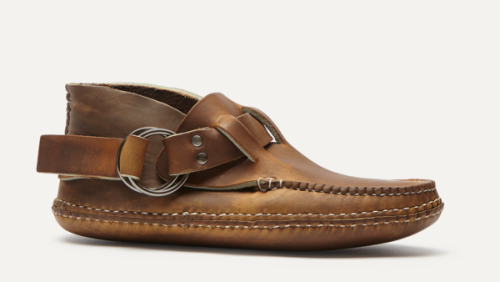
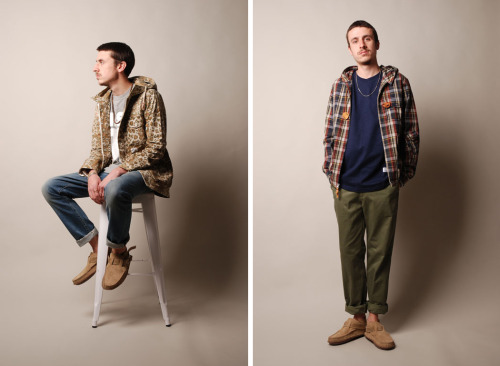
Quoddy Ring Boots
There was a brief moment about ten years ago when Quoddy’s Ring boots showed up on menswear blogs and lookbooks, but the style sadly never really caught on. Maybe it’s because the boots — which are defined by their moccasin construction and unusual double o-ring closure — look like they were taken from elfish warriors defending Middle Earth. Something you might see on a reenactor at the Northern California Renaissance Faire, or I guess, a workwear enthusiast from 2009.
Still, the style is just odd enough to fit into today’s workwear mode, which often favors slightly more offbeat takes than literal vintage reproductions. The leather is stiff at first, however, and the o-ring closure can be a pain in the ass to operate. I find I mostly just slip them on, but that’s difficult until the leather breaks-in (apparently laces are a useful invention). I’m admittedly not totally sold on them, but that’s kinda true with almost anything on the good side of ugly.
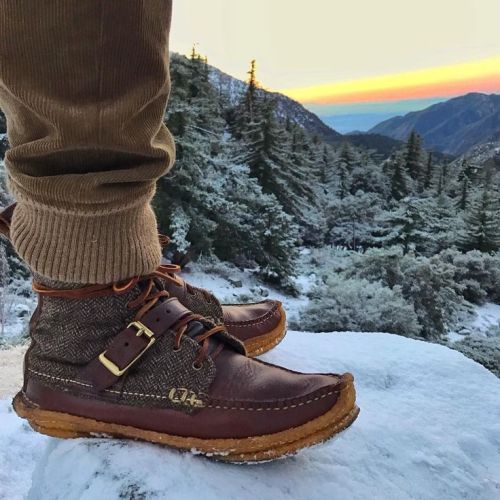
Anything from Yuketen
One of my favorite brands for classic, outdoorsman style shoes. Yuketen looks like the best of a mid-century LL Bean catalog — from guide boots to Ghillie lace-ups — but is remixed with a sense of humor. The designer, Yuki Matsuda, frequently combines odd materials for the uppers, maybe Harris tweed with Horween pull-up leather, or a patchwork combo of strange colors. The soles are often chunky, giving the shoes a hefty profile and sense of ruggedness. And while fashion-minded footwear is typically poorly made, these stand up to the best of them. Matsuda uses reputable factories, ones making more traditional, moccasin-style and Goodyear-welted shoes. Just note that these run a bit wide, so either buy from a store that allows for easy returns or take a chance and go a half-size down.
Yuketen pairs with almost anything that would be considered workwear or Americana, from more basic Ralph Lauren to Japanese imports such as Engineered Garments. The appeal here is all in how well the brand rides the line between classic menswear and contemporary style.
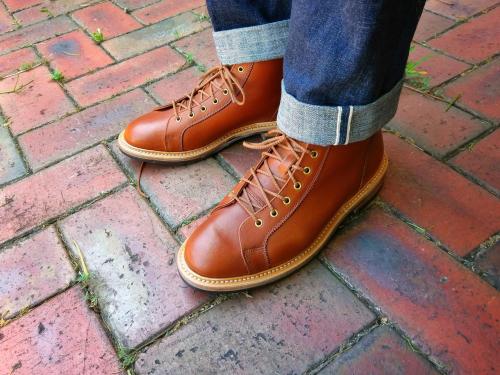
Monkey Boots
Monkey boots, which are occasionally referred to as carpenter boots, were worn by British Mods and skinheads from 1960s through ‘80s. They have a short, almost truncated profile since the facings — a term for the parts of the shoe that hold the eyelets — come up to the tip of the boot. They’re rugged, classic, and have a strong working class heritage (even before when the term skinhead referred to racists and white nationalists). And for a more traditional workwear style, they may just be the right call.
Naturally, given their history, you can expect to find monkey boots from brands such Doc Martens, but the leather is often corrected grain and of poor quality. Tricker’s makes a better version, although it’s considerably more expensive. I also have a pair from Alfred Sargent, but admittedly never wear them. They go with slightly fuller cut jeans and heavy-duty flannels, Harrington jackets, and rounded military-styled outerwear. This can be a nice option if you like that ‘60s British style.
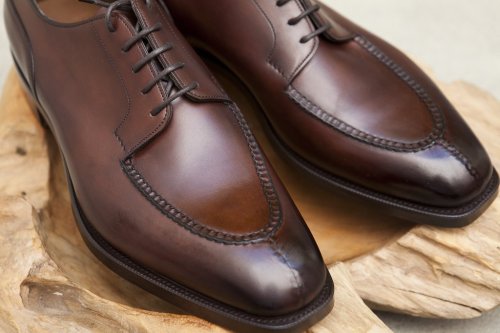
Norwegian Split Toes
Split-toes look like something your college roommate would do to your dress shoes, drawing a line at the front to make them look vaguely penile. The seam actually comes from an old British style known as a Navvy cut, which refers to how British navigational engineers (or navvies for short) used to wear split-toes while working on wet canals, railways, and roads. Some say this was a cost-saving measure that allowed shoemakers to use lower-quality parts of the hide; others say it resulted in a more water resistant construction. Frankly, I don’t know the seam’s real function, but I love the style. Wingtips are too common; cap toes too plain. Norwegian split-toes plant your feet in the ground and say you like something a little different.
To my eye, Edward Green makes the best split-toe, partly because of the unique piecrust apron and toe seam — the second of which they make with a reversed split-and-lift stitch, which gives the seam a slight texture without it looking like taxidermy. Other great options include Carlos Santos, Meermin, Carmina, Crockett & Jones, and Enzo Boanfe, all of which are more affordable. I wear split-toes almost every day with sport coats and trousers, although I prefer a more traditional oxford with actual suits.
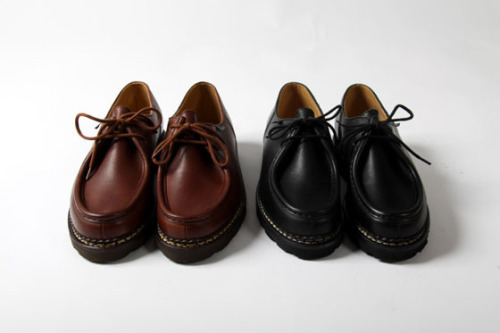
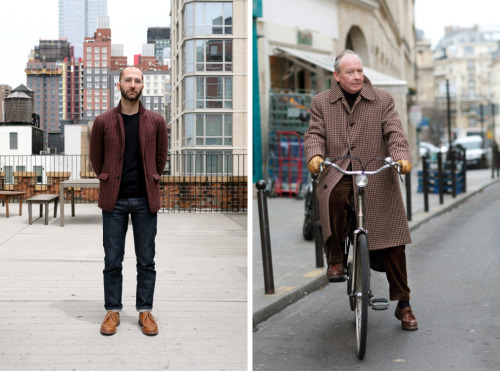
Tyrolean Shoes
Tyrolean shoes were originally made for long walks along the Alps, but sometime in the 1950s, they gained broader appeal. The French apparently love them, as do the Japanese. The reason is simple: they’re comfortable and weatherproof. These are typically made with grippy soles, Norwegian welts, and heavy-duty leather uppers that have been generously oiled with natural fats. That makes the leather a bit more water-resistant and pliable, perfect for the bellow tongues that are also designed to keep out water. The two-eyelet lacing system makes these an easy wet-weather shoe for when you don’t want to deal with boots.
Back when they were still publishing, the editors at Free & Easy loved to include Tyrolean shoes in almost every issue. The funkier style went well with the kind of workwear-inspired clothes they liked to write about. With the right pair of slim pants and topcoat, they can also go with more casual forms of tailoring. You can find them from companies such as Heschung and Paraboot. For a more affordable version, you can always consider Clarks’ Wallabees or Padmore & Barnes’ P204 (the original Wallabees). They don’t have the same water-resistance, but they’re also a lot cheaper.
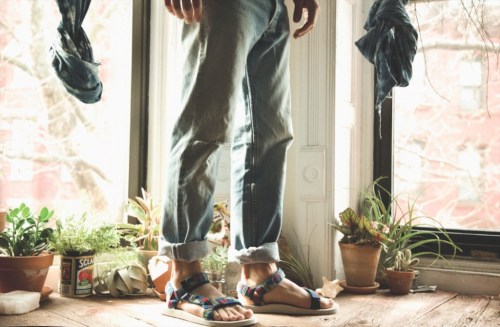
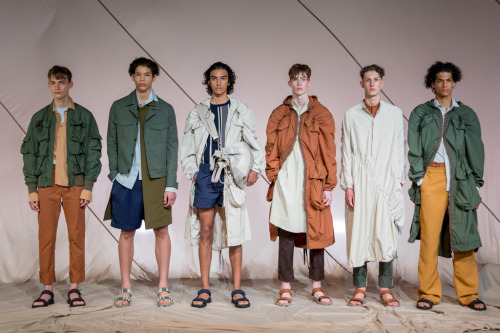
Tevas Sandals
Men’s style enthusiasts love to hate open-toed footwear, and while it’s true sandals are often a bad look, Tevas have a charm that comes from those olden days of family vacations. In recent years, they’ve been copied by brands such as Prada, Valentino, and Berluti; designers such as Patrik Ervell have sent them down runways. Pictured above is this season’s Qasimi spring/ summer presentation showing a similar look.
I mostly like these Velcro’d sandals for the same reasons I like Birkenstocks. They go well with crunchier takes on Americana, whether that be ‘70s Rugged Ivy, vintage Patagonia, or shorts with a chambray shirt and bucket hat. For something safer, you can try closed-toe huaraches. Companies such as Todd Snyder and Sid Mashburn also sell some nice leather sandals, and we have a post here on sandals that don’t suck.
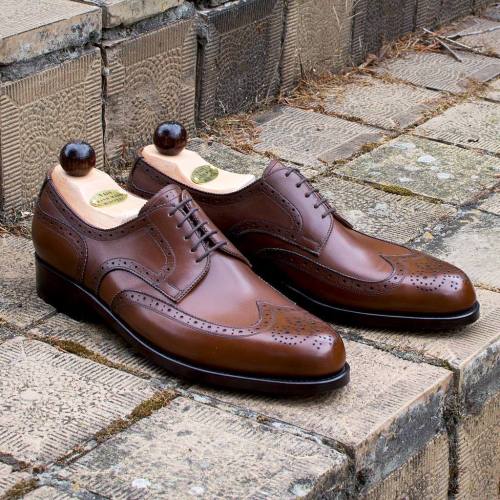
The Budapester
During the Austro-Hungarian Empire, shoemakers located along the banks of the Danube in Budapest and Vienna used to make footwear for country gentlemen and Army officers. The region’s most iconic design is known as the Budapester. Although it most often comes as a wingtip, the Budapester is really more of a shape than a style. Built with high side walls, a slightly upturned toe, and a heavy appearance, it’s about as chunky of a silhouette as you can imagine. These shoes were designed to take a hit from a round-nosed bullet – and perhaps make them look like one too. That kind of shape doesn’t photograph as well as the kind of tight-waisted, sleek shoes that come out of Italy and Japan, but they look tremendous with the right clothes. Think: cavalry twills with ribbed corduroys, or warm flannels with heavy tweeds.
There are a ton of companies offering Budapester-styled shoes, including Materna, Ludwig Reiter, Massschuhe Stefan, Heinrich Dinkelacker, and Buday. One of the most popular, however, is Vass, a company known for offering exceptional quality given their price point. Their New Peter last isn’t technically a Budapester, but it has a slightly more contemporary shape that I think makes it easier to wear (while still carrying the original Budapester spirit). You can find them at No Man Walks Alone and Jeeves.
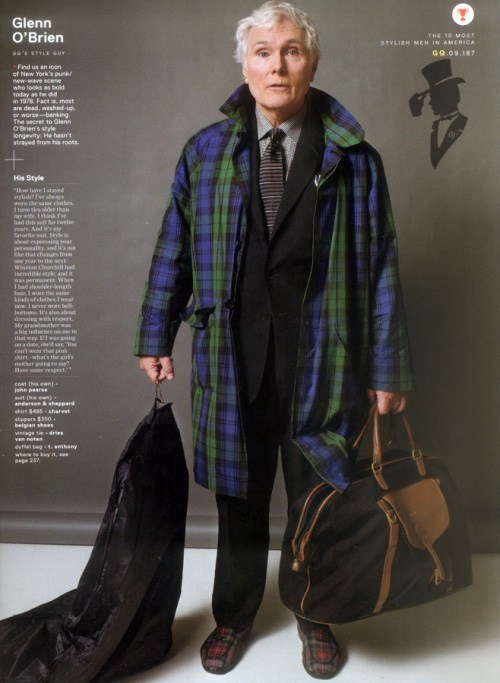
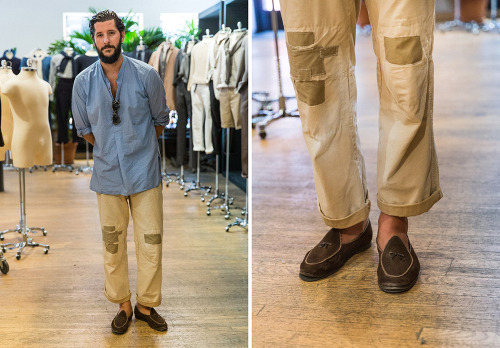
Belgian Shoes
Belgians are essentially soft-soled house slippers with a trimmed apron and dainty little bow. To some, they vaguely resemble women’s ballet flats, which is what gives them a more feminine look. Often described as the shoes of art dealers — and famously worn by Bernie Madoff and the late, great Glenn O’Brien — they’re typically paired with flat front pants and loosely cut sport coats.
I personally like them when they look less preppy. Eidos designer Antonio Ciongoli, for example, can be see above wearing Belgians with patchwork chinos and a band collar shirt. Agyesh at Stoffa wears them with suede leather jackets, long-sleeved polos, and peached cotton trousers. Given their slightly feminine vibe, I find they’re often great on very masculine looking guys (as Agyesh puts it, they can help “round out the corners”). For something less dainty looking, there’s also Baudoin & Lange, who makes similar slip-ons without the bow.
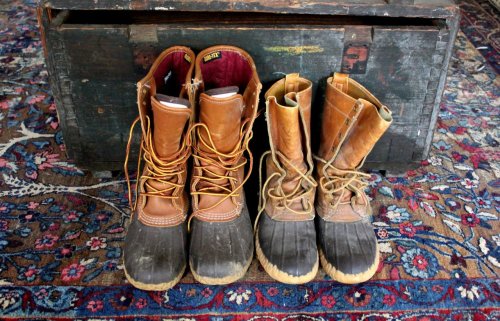
L.L. Bean Boots
The original menswear choice for ugly footwear. There’s not a single person who wasn’t horrified the first time they saw duck boots — a love for them has to be beaten into you through repeated exposure. L.L. Bean’s version is the most famous. They were invented in 1911, a year before the company’s founding, by Leon Leonwood Bean (the original L.L. Bean). Supposedly, he noticed his feet kept getting wet and cold during his hunting trips, so he came up with a new shoe design whereby the rubber came up higher on the boot. The rest of the boots, the shafts, were then made from a breathable leather. Bean formed L.L. Bean Company to market and sell his shoes — and everything since has followed.
Bean boots have become a favorite of people in the Northeast, college kids, and menswear enthusiasts (see our Bean boot buying guide). They’re reasonably affordable, last forever, and are incredibly effective and keeping out water. You can wear them with almost any kind of classic American piece of casualwear, from mountain parkas and five-pocket cords, to more rugged pieces of workwear. I wear mine with jeans and Nigel Cabourn outerwear. These are undeniably ugly, but like with the best ugly shoes, they’re ugly in just the right ways.







